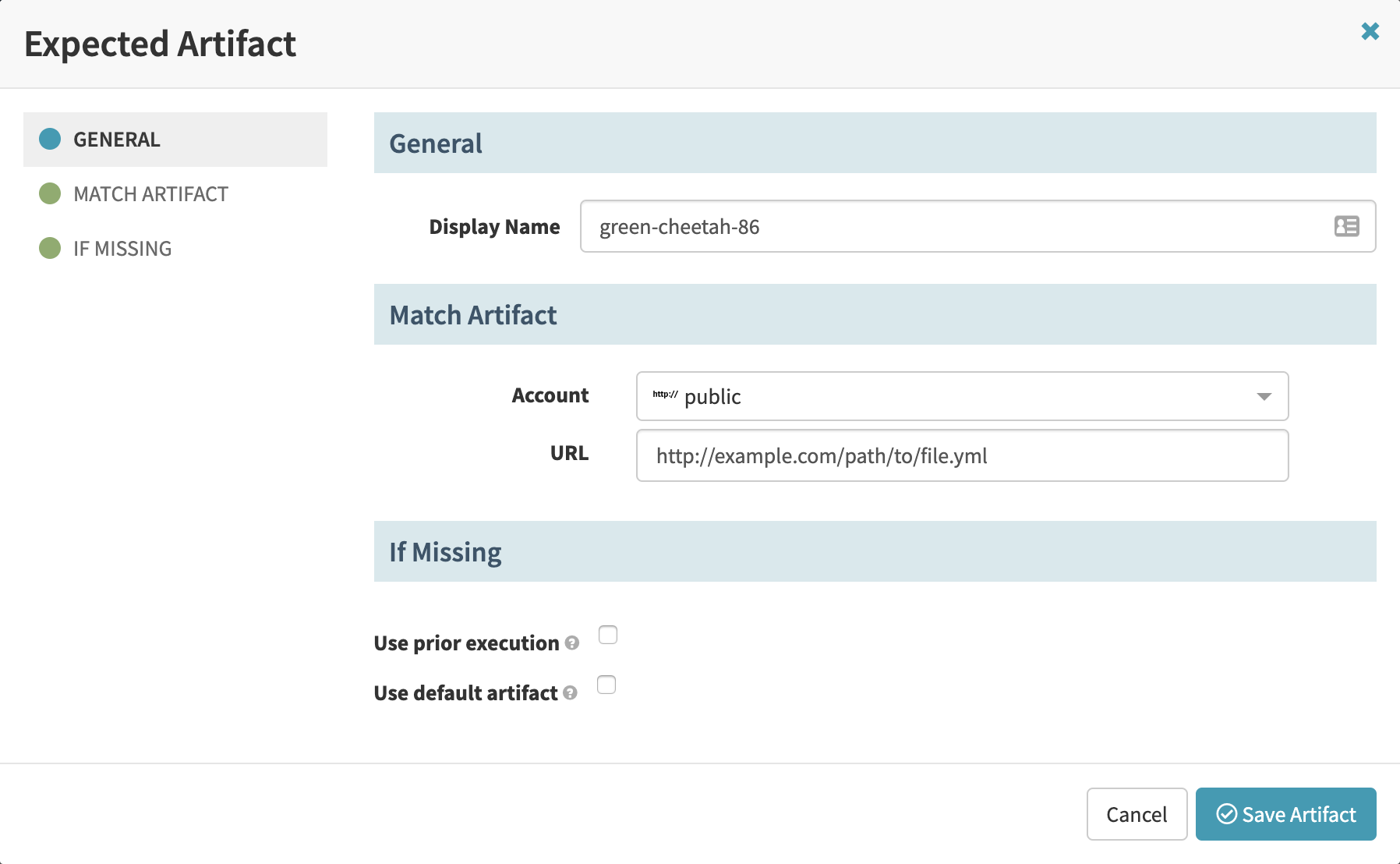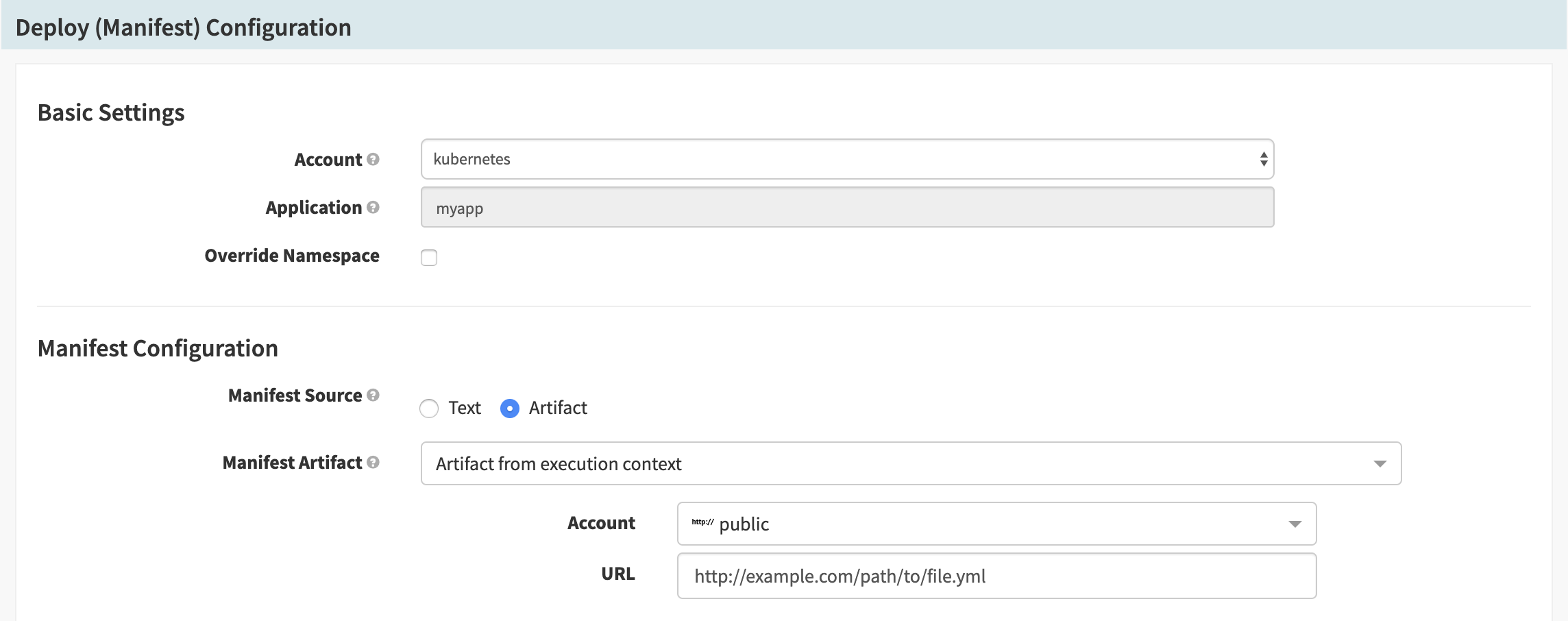HTTP File
These artifacts are generally consumed by stages that read configuration from text files, such as a Deploy Manifest stage.
A file represented by an HTTP file artifact can be downloaded using HTTP Basic authentication.
HTTP file artifact in the UI
The pipeline UI exposes the following fields for the HTTP file artifact:
| Field | Explanation |
|---|---|
| Account | An HTTP artifact account. |
| URL | The fully-qualified URL from which the file can be read. |
In a trigger
When configuring certain triggers, you can use an HTTP file as an expected artifact.

Configuring HTTP file fields in a pipeline trigger’s expected artifact settings.
In a pipeline stage
When configuring a “Deploy (Manifest)” or “Deploy” stage, you can use an HTTP file as a manifest or application artifact. You can either use a previously-defined artifact (for example, an artifact defined in a trigger) or define an artifact inline.

Configuring a Deploy (Manifest) stage to use an HTTP file as a manifest source.
HTTP file artifact in a pipeline definition
The following are the fields that make up an HTTP file artifact:
| Field | Explanation |
|---|---|
type | Always http/file. |
reference | The fully-qualified URL from which the file can be read. |
name | An optional identifier used for future references to the artifact. |
version | N/A |
location | N/A |
The following is an example JSON representation of an HTTP file artifact, as it would appear in a pipeline definition:
{
"type": "http/file",
"reference": "https://raw.githubusercontent.com/....",
"name": "My manifest stored in GitHub",
}